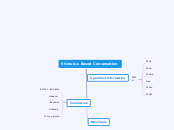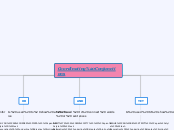leads
TIPS FOR FINDING A LEAD
narrative storytelling
If you were just
telling a good sto-
ry, how would you
start?
problem/solution
can you set up
a problem so the
reader wants to
find out a solution?
contrast
would a 'then and
now' approach work
in the story?
build on a quote
Is there a great
quote up on the
lead?
Mystery approach
can you tease the
reader with surprise
that leads to the nut
graph?
descriptive approach
will a description
of the scene relate
to the focus?
Focus on a Person
Is there someone
who exemplifies the
problem or issue?
Memorable Item
impression
or fact
Reader Interest
What's more
interesting
about your story
leass to avoid
plop-a-person
It is a misuse for
focus on a person.
When the author
starts the story with
a sketch of a person,
but then they disapear,
the story becomes mis-
leading
good/bad news
They tend to
be cliché, boring
and judgemental
clichés
Mostly, you should
avoid using them, but
a play of words can be
a clever tool once in a
while
EX: Nightmare/dream
crystal ball leads
As most journalists
don't write about exact
sciences, it is unaccura-
te to predict the future
warm report
cluttered
keep your leads concise
and simple. Don't try and
include all your facts in a
single sentence.
soft leads
other soft leads:
Focus-on-a-person
contrast leads
teaser leads
mystery leads
list leads
question leads
Word play (clichés)
build-on-a-quote leads
be careful not to
repeat too much
of the quote in the
lead
anecdotal
starts with a story
about a person or
an event. It is effec-
tive to combine a-
necdotal and descrip-
tive techniques
narrative
tells a story with
enough dramatic
action that who ever
reads it feels like they
are witnessing the
event
descriptive
Centers in a person,
place, or event. It can
be used for news or for
news or for features
attribution leads
tells the reader where you
got your information from
quotes
whenever you quote
someone directly or
indirectly, the state-
ment needs to be a-
ttributed
avoid the use of full, direct
quotes on leads. It can be
confusing and awkward
cluttered attribution
if it is too long, it will clutter
the lead and the audience
will be lost
attribution first or last
You attribute first if
it is going to be brief
or if the person who
said a quote is the
most important
thing in a story
accusations
must be attributed to
police or other autho-
rities
Impact Lead
Explains how the readers and
viewers will be affected by
the issue covered
summary leads
breaking news leads
Hard News Leads
Are meant to be used
if the subject is serious.
Generally, breaking news
that happened that day
or the day before are to
be given a summary-lead
approach
Updated leads
also called 'first
day lead'.
as if readers were hearing the
news for the first time
Often used in media and TV
elements
Point of emphasis
active vs passive voice
active is generally preferred
but passive can be used when
the emphasis is on the what
happened and not who caused
inverted pyramid
more important info.
first
order of information
where to say when
the time element
must be placed
accurately
WHO
WHAT
WHERE
WHEN
WHY
HOW
delayed identification
modifiers in the first paragraph
Subject-verb-object order
specially effective in
broadcasting writing









